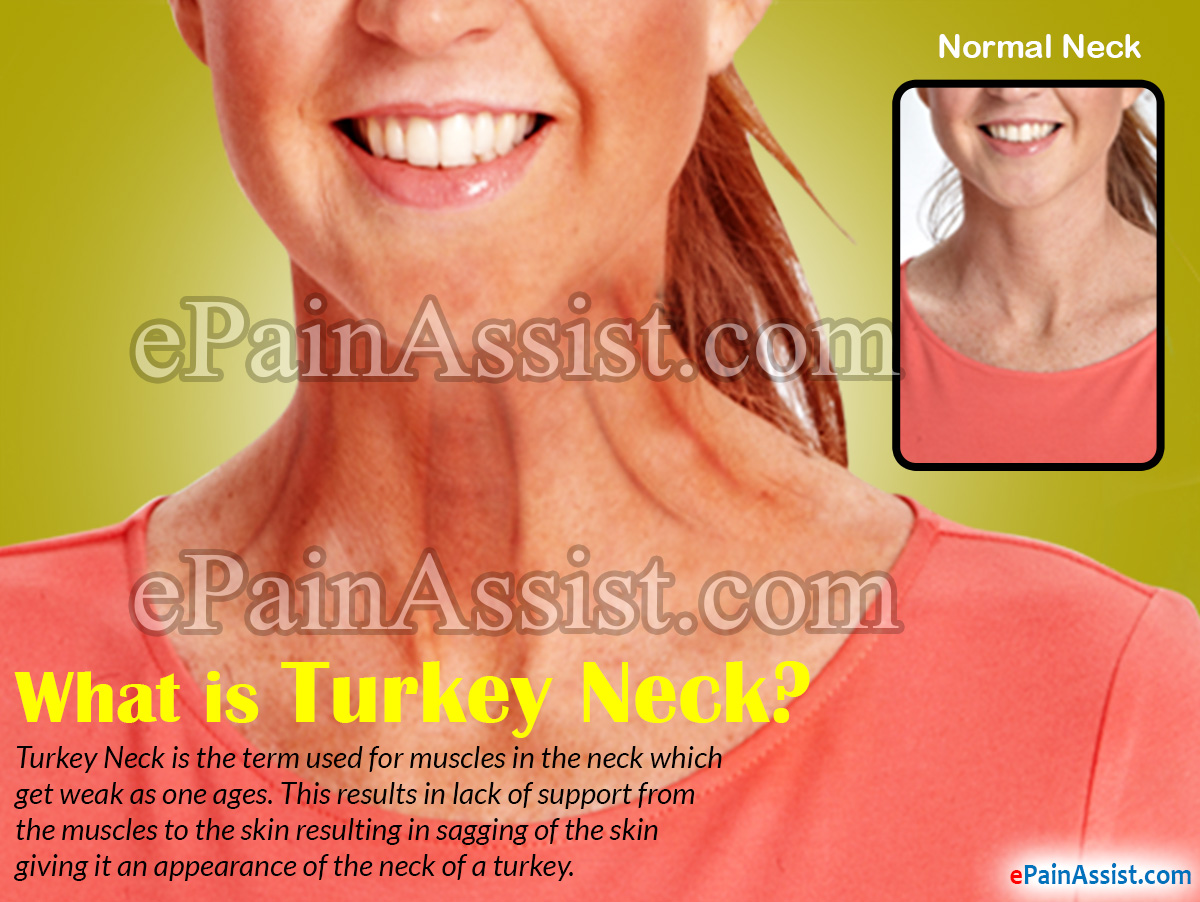What is Turkey Neck?
Turkey Neck is the term used for muscles in the neck which get weak as one ages. This results in lack of support from the muscles to the skin resulting in sagging of the skin giving it an appearance of the neck of a turkey. Another common cause for Turkey Neck is as one ages the skin loses its sheen and elasticity causing it to sag. Turkey Neck can be prevented in every way by practicing regular neck exercises to keep the neck muscles strong. Frequent exposure to sun is also one of the causes for the neck muscles to lose their strength and cause Turkey Neck.

What are the Causes of Turkey Neck?
Coming to the causes of Turkey Neck, exposure to sun is one of the common causes. The ultraviolet rays of the sun break down the skin’s connective tissue leading to the loss of elasticity of the skin.
Normal process of aging also results in weakness of the muscles of the body along with the neck muscles resulting in Turkey Neck.
Genes also play a role in development of Turkey Neck.
Hormones also have a role to play in development of Turkey Neck.
Smoking is also one of the causes for weakening of the muscles of the neck. Smoking causes narrowing of the blood vessels and also cause the skin to age quickly than what would be the norm.
Ways to Get Rid of Turkey Neck
The best way to get rid of turkey neck or prevent yourself from getting turkey neck is to perform neck exercises. Neck strengthening exercises help neck muscles stay strong and support the skin for a longer period of time. Some of the neck exercises that you can try are:
Cervical Flexion and Extension Exercise to Get Rid of Turkey Neck: One can perform this exercise in office or at home. All you need to do is try and tuck the chin in and gently bring the head forwards trying to touch the chest. Next, try and bend the neck backwards as far as possible. Do this exercise couple of times a day.
Cervical Lateral Flexion Exercise to Get Rid of Turkey Neck: Stand straight and bend your neck to one side such that your ears move down towards the shoulder, make sure you do not bend your neck forward or rotate the neck while doing this exercise. Maintain this position for a couple of seconds and then do it on the other side. Try doing this exercise a couple of times a day.
Cervical Rotation Exercise for Turkey Neck: To do this exercise, stand straight with your spine being in erect position. Now slowly turn the neck to one side to the extent possible and hold there for a couple of seconds. Now do the same on the other side.
Creams and Lotions for Turkey Neck: There are also quite a number of skin creams and lotions that are available in the market which can be used to protect the skin from the harmful ultraviolet rays of the sun. A sunscreen of choice is quite effective for preventing the ultraviolet rays of the sun to penetrate the skin. A skin moisturizer with an estimated Sun Protective factor of 30 is the best to prevent the skin from aging. Before choosing a cream to apply to the neck, you should make sure that the cream is good enough to tighten the skin, increase its firmness, and lift the appearance of the entire neck region. The cream should not only affect the epidermis layer of the skin but also should affect the dermis layer for being more effective especially in people with Turkey Neck. The side effect profile of these creams also need to be taken a look at.
Surgical Procedure: Surgery in the form of a neck lift is also a form of treatment for Turkey Neck. This is a procedure in which the skin of the neck is tightened to get rid of the sagging of the skin, although direct excision of the excess skin under local anesthesia has also shown to be quite effective in treatment of Turkey Neck.
Also Read:
